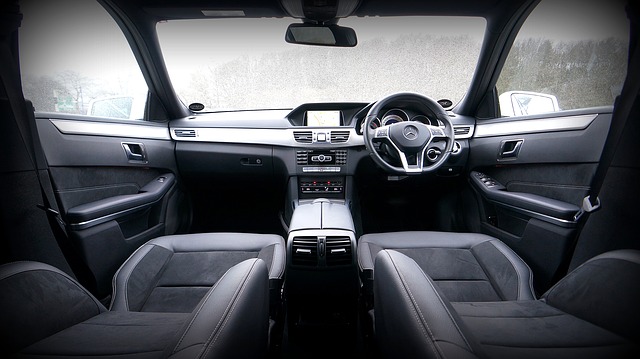The modern windshield glass on automobiles is a product of several improvements over the original plate glass that was first used to protect drivers and make driving more comfortable. Unlike a standard glass window, the windshield glass on a car or truck will crack into thousands of tiny pieces upon impact – most of them held in place by a plastic film.
The first cars produced did not have windshields. But the first auto drivers soon saw the need for some protection. Even traveling at slow speeds, having wind blowing in your face, filled with bugs, rocks and other debris, made driving harder than it needed to be. So, the first windshields were added to automobiles, made from the same type of glass used in household windows.
With an increasing number of people purchasing and driving cars, there was an increase in accidents. It was soon discovered that the plate glass used in auto windshields posed a real danger to driver and passenger alike. When the glass shattered and hit the people in the car, it was likely to cut them. And if someone was unfortunate enough to fly through the windshield – which happened with some regularity, as there were no seat belts– then he or she could easily die from lacerations. Deaths from going through an auto windshield happened frequently enough that there was a term used for those that died, “wearing a glass necklace”.
Improving the Windshield by Accident
While there were efforts made to create a better windshield, such as the beginning of glass manufacturing at Ford production plants, it was an accidental discovery by a French chemist, Edouard Benedictus, that lead to the windshields used today. Confusion in the lab caused a glass beaker to be put up without being cleaned. Later Benedictus knocked the beaker off a shelf and it broke when it hit the floor. However, the material left in the beaker, a form of cellulose, kept the glass from flying everywhere. The glass broke, but stayed stuck to the cellulose material – giving Benedictus the idea of creating a safer glass material.
Benedictus patented his first new glass product in 1905, but it took multiple improvements and developments by numerous parties before the idea made its way into automobile windshields. Ford would ultimately begin using safety glass in its cars in 1928, paving the way for safety glass to begin showing up in a wide range of automobiles from a variety of manufacturers.
What Keeps Windshields from Shattering?
The modern safety glass used in cars and trucks is constructed of three layers – two layers of glass and a middle layer of Ply-Vinyl Butyrl, a plastic product that seals the two layers of glass together. The glass layers are heated and cooled using a special technique to make them stronger, and the plastic layer provides additional support while keeping most of the glass in place upon impact.
When an object strikes your windshield with enough force, it will cause the glass to crack. But instead of shattering into large, sharp, potentially deadly pieces, the glass is designed to stay in place because of the inner plastic layer. Some glass will still come free if the impact is sufficient enough, but the majority of the glass should stay put.
Is Safety Glass Used in All Car Windows?
Safety glass, also known and laminated glass, is the standard for the windshield at the front of the vehicle. However, it may or may not be used in the other windows of the car. In most vehicles, the other windows are made of tempered glass. Tempered glass is also heated and cooled in a specific way to increase its strength. But unlike laminated glass, tempered glass has no plastic layer inside.
Tempering makes glass stronger. It also makes it shatter in a specific way – into many, many small pieces. So the tempered glass in the other windows of your car is not only strong, it is also relatively safe should it shatter.

